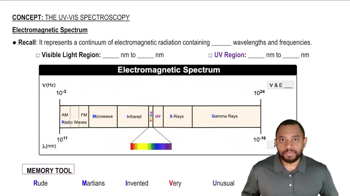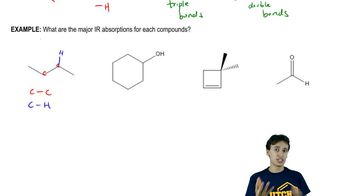Predict the characteristic infrared absorptions of the functional groups in the following molecules.
(a) cyclohexene
(b) pentan-2-ol
(c) pentan-2-one


 Verified step by step guidance
Verified step by step guidance Verified video answer for a similar problem:
Verified video answer for a similar problem:



 16:47m
16:47mMaster Common IR Frequencies with a bite sized video explanation from Johnny
Start learning